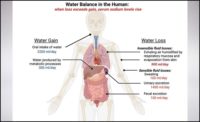When a building is found to be consuming excess energy, the next step is usually an energy audit followed by retro-commissioning of the HVAC system. If available, an infrared scan of the building exterior might follow. Perhaps these steps will quickly pinpoint the problem. While these tools are great to have, consulting engineers should not forget that their experience and thought processes are the most valuable tools for accurately diagnosing and fixing the problem.
When you are called by the building owner or manager to figure out the source of the energy “leak,” how can you ensure your differential diagnosis will be complete and your final report accurate? While it might be easy to rely on building information systems to identify the problem, what will you do if this technology is not present or functional? Even when automated systems are in place, valuable time and dollars can be wasted on non-specific tests that may not be necessary. Instead of taking a rote approach, you can use complete yet flexible thinking to rapidly diagnose and correct the problem.
Front-line physicians and other clinicians are faced with this same challenge when they are required to accurately diagnose patients prior to treatment. A misdiagnosis could mean lost time and incorrect treatment for the patient as well as wasted clinical resources and possibly a human life. The clinician who starts with a broad differential diagnosis to ensure that unusual illnesses are not missed and yet maintains a cost-effective path to reach their final, accurate diagnosis is an invaluable colleague. Too many clinicians evaluate a sick patient by simply ordering a barrage of blood tests and imaging studies rather than performing a careful physical exam and thinking deeply about possible causes for signs and symptoms. While this approach may seem protective for the clinician in our litigious era, it can be inaccurate and is unnecessarily expensive.
An excellent emergency medicine physician who has saved many patient lives by using his agile thinking recently told me about a mental framework he uses when evaluating a new patient. This approach helps him think comprehensively, examine the patient proactively, and order only tests that are truly necessary.
This strategy, familiar to medical students from memorizing excruciatingly long lists of cranial nerves, arterial branches, wrist bones, and more, is not a step-by-step guide about what to do; rather, it’s a guide for targeted evaluations. The not-so-secret secret is to use a mnemonic that will remind you to consider all the categories of possible defects and then to actively search for evidence that allows you to narrow your list. While this approach might sound overly simplistic, it does effectively prevent one from thinking narrowly and making incorrect assumptions.
For example, the ED doc referenced uses the word VINDICATE to remind him to think about all the organ systems, not just the obvious ones, which might be causing the problem his patient is experiencing.
What mnemonic do you use when considering HVAC malfunctions or end-user mistakes that might be causing the energy losses you were called on to diagnose and treat?




